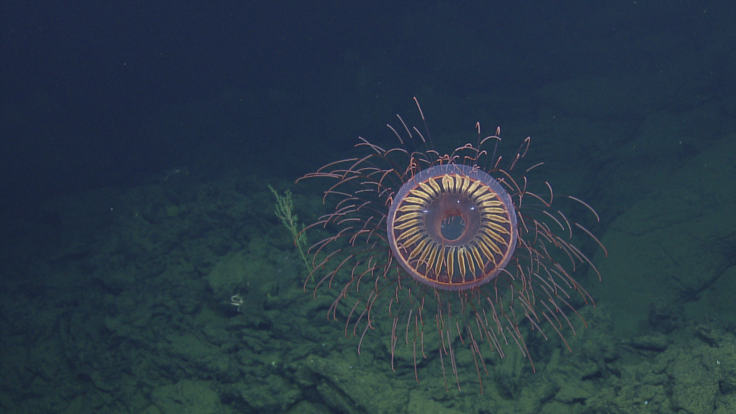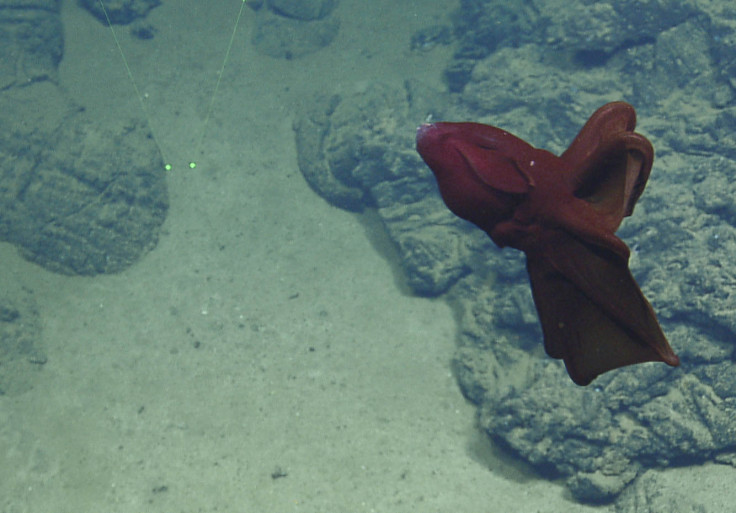Watch this stunning video of a firework jellyfish and vampire squid from the deep sea
Researchers took pictures of the jellyfish at a depth of 4,019ft in the ocean off the East of Socorro Island.

A recent breath-taking video of two alien-looking sea creatures can dazzle almost any viewer. The clip is from Ocean Exploration Trust led by Dr Robert Ballard and shows a vampire squid and a jellyfish that resembles a starburst firework pattern in the night sky.
In a statement to IBTimes UK, the research team said it took pictures of the jellyfish at a depth of 4,019ft in the ocean during one of its deep sea explorations at the East of Socorro Island off the Revillagigedo Archipelago.
Fact box
The Revillagigedo Archipelago is made up of four islands of volcanic origin including Socorro, Clarion, San Benedicto, and Roca Partida. Known as the Mexican biosphere reserve, the area is home to the largest aggregation of sharks and manta rays and thousands of other oceanic species. Also known as the Revillagigedo National Park, the area is spread across 148,000sq km and is the largest fully protected marine reserve in North America.
The Revillagigedo Archipelago island chain is located about 400km (300 miles) off Baja California, Mexico.
While describing the creature's dazzling appearance, Nautilus Live said the jellyfish's radial canals that move nutrients through its belly form a starburst pattern and splash bright yellow and pink lights beneath the sea while reflecting the lights of the ROV Hercules (Remotely Operated Vehicle).
In the absence of light, the gelatinous beauty drifts unseen in the dark. According to the group, the Halitrephes jelly has previously been described in 1909 and floats through much of the deeper reaches of the Eastern Pacific Ocean.

Just like the firework jellyfish, the vampire squid was spotted at a depth of 1,290m (4,232ft) off the Socorro Island. Scientifically known as vampyroteuthis infernalis, the creature is neither a squid nor an octopus and belongs to the order of Vampyromorphida.
"This fierce-sounding cephalopod is actually a scavenger, reeling in specks of marine snow using two retractable filaments sent out from the middle of its umbrella-like web of arms," said the ocean exploration group in its paper, narrating the predatory mollusc's hunting habits.
"Pulling filaments through mucus-covered suckers, the vampire squid transfers these mucusy globs of detritus and decaying material to its mouth. During our encounter, the vampire squid also flipped its webbed arms open into a 'pineapple posture,' a move that instantly makes it less visible in the water column," it added.
The close encounter was captured by ROV Hercules's HD camera and a low light camera for bioluminescence designed by Dr Brennan Phillips at University of Rhode Island's Graduate School of Oceanography and David Gruber at the City College of New York/Baruch College.






















